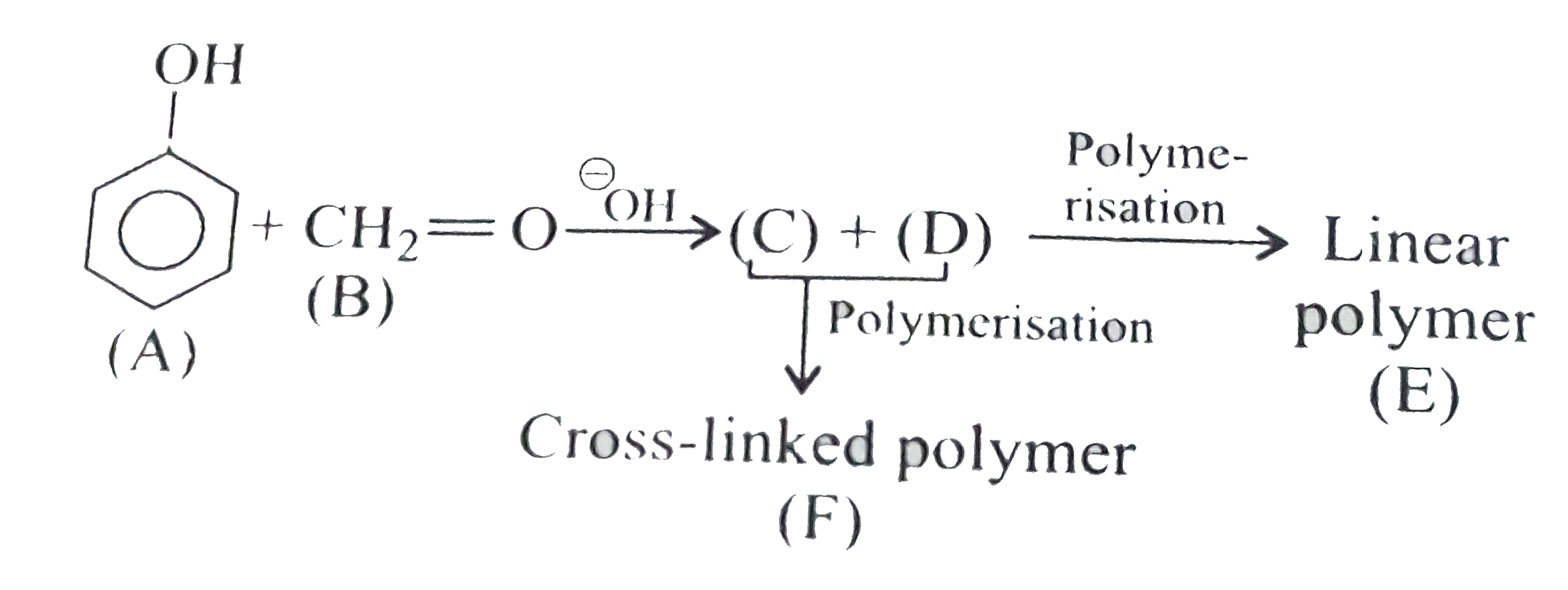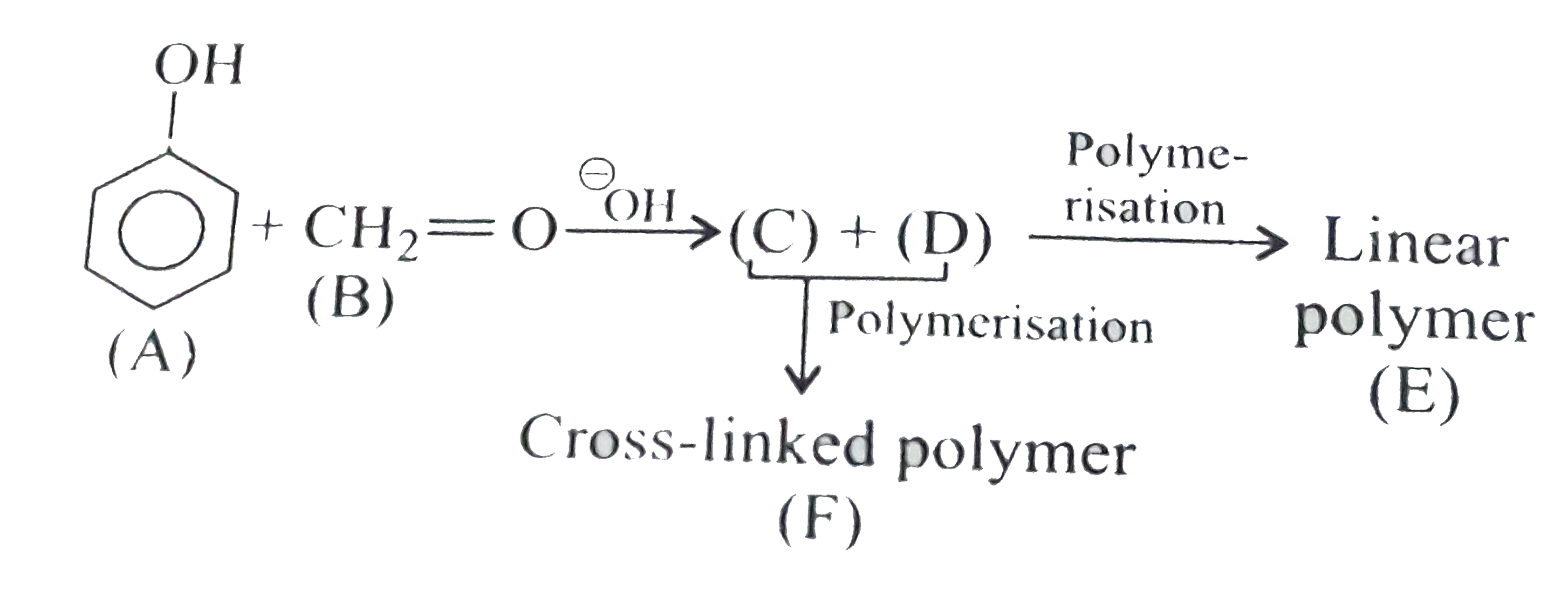Cross linked polymer Silicone is formed by hydrolysis of
The correct Answer is:C
To solve the question regarding the formation of cross-linked polymer silicone through hydrolysis, we can break down the process step by step:
1. Identify the Reactant: The question asks about the hydrolysis of a specific compound that leads to the formation of cross-linked polymer silicone. The relevant compound here is alkyl trichlorosilane.
2. Write the General Formula: The general formula for alkyl trichlorosilane can be represented as R-SiCl3, where R is an alkyl group (like methyl, ethyl, etc.).
3. Hydrolysis Reaction: When alkyl trichlorosilane undergoes hydrolysis, it reacts with water (H2O). The reaction can be represented as follows:
R−SiCl3+3H2O→R−Si(OH)3+3HCl
Here, HCl is released as a by-product.
4. Formation of Cross-Linked Structure: The product R-Si(OH)3 can further react with other alkyl trichlorosilanes or itself, leading to the formation of a cross-linked network. This cross-linking occurs through the condensation of hydroxyl groups, resulting in the release of water and the formation of siloxane bonds (Si-O-Si).
5. Conclusion: Therefore, the cross-linked polymer silicone is formed by the hydrolysis of alkyl trichlorosilane (R-SiCl3).
Final Answer:
Cross-linked polymer silicone is formed by the hydrolysis of alkyl trichlorosilane (R-SiCl3).
---
R−SiCl3+3H2O→R−Si(OH)3+3HCl
Here, HCl is released as a by-product.
Cross-linked polymer silicone is formed by the hydrolysis of alkyl trichlorosilane (R-SiCl3).
Topper's Solved these Questions
- BOOK - RESONANCE ENGLISHCHAPTER - P-BLOCK ELEMENT (BORON AND CARBON FAMILY)EXERCISE - Exercise-2 Part-IV : COMPREHENSIONS11videos
P-BLOCK ELEMENT (BORON AND CARBON FAMILY)
- BOOK - RESONANCE ENGLISHCHAPTER - P-BLOCK ELEMENT (BORON AND CARBON FAMILY)EXERCISE - Exercise-317videos
P-BLOCK ELEMENT (BORON AND CARBON FAMILY)
- BOOK - RESONANCE ENGLISHCHAPTER - P-BLOCK ELEMENT (BORON AND CARBON FAMILY)EXERCISE - Exercise-2 Part-II : SINGLE AND DOUBLE VALUE INTEGER TYPE23videos
P-BLOCK ELEMENT (BORON AND CARBON FAMILY)
- BOOK - RESONANCE ENGLISHCHAPTER - P BLOCK ELEMENTSEXERCISE - PART -II23videos
P BLOCK ELEMENTS
- BOOK - RESONANCE ENGLISHCHAPTER - P-BLOCK ELEMENTS (HALOGEN & NOBLE GASES)EXERCISE - APSP PART-322videos
P-BLOCK ELEMENTS (HALOGEN & NOBLE GASES)
Similar Questions
Knowledge Check
- Question 1 - Select One
Assertion : Bakelite is a thermosetting polymer.
Reason : Bakelite is formed by cross- linking of novolac and formaldehyde .AIf both assertion and reason are true and reason is the correct explanation of assertion .BIf both assertion and reason are true but reason is not the correct explanation of assertion .CIf assertion is true but reason is false.DIf both assertion and reason are false.

The cross-linked polymer(F)is:View SolutionThe straight chain polymer is formed by
View Solution
The linear polymer(E)is formed is:View SolutionAmong the following substituted silanes, the one which will give rise to cross linkes silicons polymer on hydrolysis is
View SolutionSilicones are synthetic polymers containing repeated R2SiO units . Since the empirical formula is that of a ketone (R2CO), the name Silicone has been given to these materials . Silicone can be made into oils , rubbery elastomers and resins . They find a variety of applications because of their chemical inertness , water repelling nature, heat resistance and good electrical insulating property .
Commerically silicon polymers are usually synthesised by the hudrolysis of
R2SiCl2[R=Methyl(Me)orphenyl(ϕ)]
 .
.
If we start with SiMeCl3 as the starting material silicones formed is :View SolutionBF3 on hydrolysis forms
View SolutionCrosslink silicone polymers can be obtained by the condensation of
View Solution

